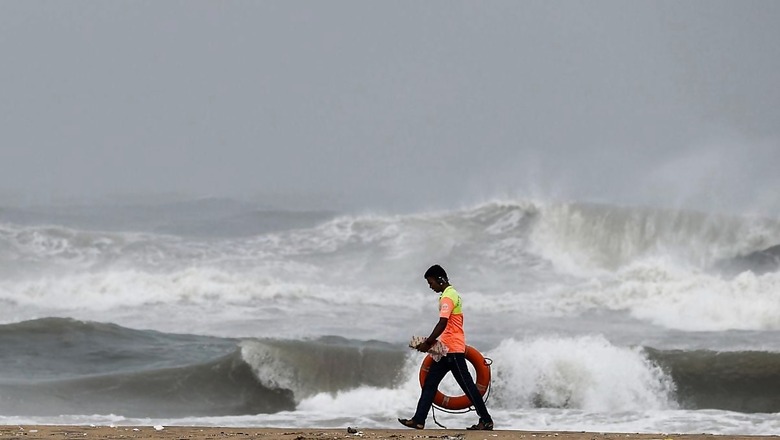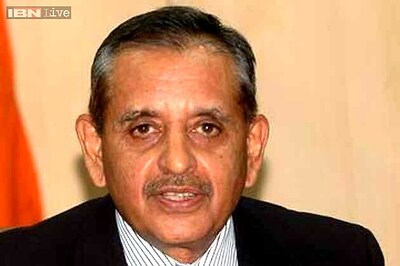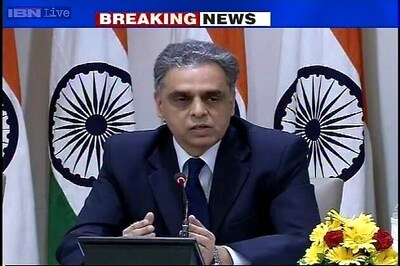
views
Cyclone “Biparjoy” is expected to intensify into a “very severe cyclonic storm” category within the next 12 hours, the India Meteorological Department (IMD) said on Wednesday, while experts have noted that it would have a “mild” impact on the monsoon onset over Kerala and result in “weak” progress beyond the southern peninsula.
“The severe cyclonic storm “Biparjoy” (pronounced as “Biporjoy”) over eastcentral and adjoining southeast Arabian Sea moved nearly north-northeastwards with a speed of 5 kmph during last 6 hours and lay centered at 0830 hours IST of 07th June, 2023 over the same region near latitude 12.7°N and longitude 66.2 °E, about 880 km west-southwest of Goa, 990 km southwest of Mumbai, 1060 km south-southwest of Porbandar and 1360 km south of Karachi,” the IMD said in its latest bulletin.
According to the weather office, it will intensify into a very severe cyclonic storm within the next 12 hours, expected to move in a nearly northward direction during the next 24 hours and then shift to a north-northwestward path over the subsequent three days.
A Very Severe Cyclonic Storm is characterised by a cyclonic disturbance with a maximum average surface wind speed ranging from 64 knots (118 km/h) to 89 knots (166 km/h).
Landfall in Pakistan
According to weather experts, cyclone Biparjoy will most likely make landfall in Pakistan. The Met department stated in its bulletin that the depression lay about 1,490 km south of Karachi as of 08:30 am on June 6.
“Generally, whenever there is a cyclone, it affects the onset of the monsoon. This may cause a delay of about one or two days,” an official was quoted as saying PTI. “As the cyclone moves further, it is likely to go north and at that time, we will be able to see the impact that it can have on our coast,” said Sunil Kamble, the head of Regional Meteorological Centre (RMC) Mumbai.
Warning to Fishermen
The Meteorological office has issued a total suspension of fishing operations in various regions. Over the east-central and adjoining west-central and south Arabian Sea, fishing operations are suspended until June 12.
Similarly, in the west-central and adjoining northwest Arabian Sea, fishing operations are suspended from June 12 to 14. Fishermen are strongly advised not to venture into the central Arabian Sea until June 13, and to avoid the adjoining areas of the north Arabian Sea during June 12-13. Additionally, fishermen are advised to refrain from venturing into the adjoining areas of the south Arabian Sea until June 7.
Those already at sea are urged to return to the coast for their safety, it said.
In Kerala, warnings were also issued by local authorities to prevent fishermen from venturing into the deep sea.
Meanwhile, the IMD has not made any significant predictions regarding the impact on countries bordering the Arabian Sea, which includes India, Oman, Iran, and Pakistan.
According to the Joint Typhoon Warning Centre (JTWC), the US Department of Defense’s agency responsible for issuing tropical cyclone warnings for the Pacific and Indian Oceans, Cyclone Biparjoy has undergone a 40-knot (74 km/h) intensification since Tuesday morning.
Monsoon Onset in Kerala, Southern Peninsula
Skymet had previously predicted the onset of the monsoon over Kerala on June 7, with a margin of error of three days.
Over the course of the last 150 years, the date of monsoon onset in Kerala has exhibited significant variation, with the earliest recorded instance on May 11, 1918, and the latest on June 18, 1972, as per data from the IMD (India Meteorological Department).
In recent years, the southeast monsoon arrived in Kerala on May 29 last year, June 3 in 2021, June 1 in 2020, June 8 in 2019, and May 29 in 2018. Studies indicate that a delay in the monsoon onset over Kerala (MOK) does not necessarily correlate with a delay in the monsoon onset over northwest India.
However, a delayed MOK is generally associated with a subsequent delay in onset for the southern states and Mumbai. Scientists have said that a delayed MOK does not significantly impact the overall rainfall across the country during the monsoon season.
(With inputs from PTI)




















Comments
0 comment